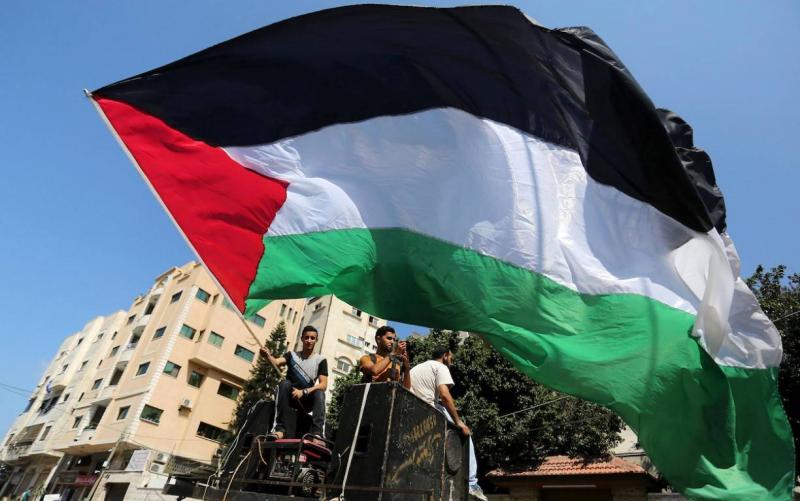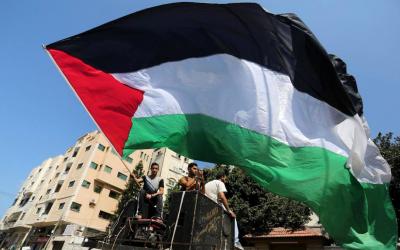In the midst of the fierce and blind war waged by the dangerous Israeli military machine on the Gaza Strip, and under the thick dust that obscures its real targets, both near and far, there must be a space for a cold-minded insight, and a reflective distance that allows for some calm thinking and clarity of vision to foresee trends and outcomes on both sides of this tragic confrontation.
On the Israeli side, amidst the noise of heavy military arsenals and the serious massacres in Gaza and the West Bank, under the banner of "Iron Swords", there is a state of defeat for the arrogance of the "invincible army", and deep echoes created by the "Al-Aqsa Flood" phenomenon, which are not easily healable within the psyche of the entity nor can they be addressed by scorched earth invasions and annihilation airstrikes. Above this battlefield impasse, Tel Aviv is burdened by four pressures: First, a shift in global public opinion against it after a transient sympathy; second, the positions of the United Nations, especially regarding the activation of Article 99 of its Charter and holding a session of the UN Security Council; third, the embarrassment of Washington and Europe from Israel's obstinacy regarding civilian protection, humanitarian ceasefires, and the risk of expanding the war zone, where the background of extensive U.S. support includes discomfort from the White House regarding the fanaticism of Tel Aviv's rulers; and fourth, explicit condemnations from international humanitarian, regulatory, and media institutions for deliberately targeting journalists and photographers in southern Lebanon and Gaza. All of this reflects confusion in decision-making, creating a dual and contradictory Israeli scene: military arrogance from above and political fragility from below.
On the side of Hamas and its participants in the field, backed in depth by the "axis of resistance and steadfastness" led by the Islamic Republic of Iran, the scene is no less tight and confused. It is clear that Hamas is no longer equipped in the same way; it has shrunk with unexpected giants in the Al-Aqsa Flood operation and has weakened its ability to rain down thousands of rockets on the Israeli depth as it used to do, losing many positions in the north and south of the Gaza Strip, without receiving the necessary and sufficient support from its allies. This military narrowness on the ground may have been one of its motivations to announce the "Advance of Al-Aqsa Flood" from Lebanon, as if to compensate for what it lost on its natural battlefield, regardless of its obligation to clarify and explain or to publicly retreat under the pressure of widespread Lebanese rejection.
In the "war envelopments" outside Gaza, it became clear that Iran's decision is not to engage in a direct and comprehensive confrontation, but rather to be content with "controlled distractions", starting from Yemen, Iraq, and eastern Syria, extending to southern Lebanon. It is not a detail that it insists on repeatedly denying its responsibility for the Houthis' drones and missiles, as well as for maritime piracy and participation in other arenas. Behind this discipline are negotiations and compromises in the diplomatic backroom in search of exits, settlements, and costs. The Iranian history attests to Tehran's skill in weaving the famous seditious pragmatic policies. This pragmatism has imposed a slow turnaround in the Iranian position, reflected in President Ebrahim Raisi's acceptance, albeit silently expressed, of the outcomes of the recent Arab Islamic summit in Riyadh, based on its three pillars: the exclusivity of Palestinian legitimacy in the Palestine Liberation Organization, a two-state solution based on the land-for-peace equation, and holding an international conference to endorse this solution. These pillars contradict the Iranian approach followed since the 2002 "Arab Initiative" summit in Beirut.
The most eloquent position regarding this central direction, sanctioned by the "Metropolis of Arena Unity" (i.e., Tehran), was articulated by the Secretary-General of Hezbollah, Sayyed Hassan Nasrallah, in his recent speech, when he shockingly stated the impossibility of achieving a "knockout" against Israel, but rather winning by "points" and accumulating achievements. It is known that victory by points, according to boxing rules, means temporary success over the opponent based on the number of punches landed, while this opponent (Israel) retains its full presence and vitality, ready for a subsequent bout which it may win.
Thus, in comparing the scenes on both sides of the ongoing bloody conflict, whether the war remains confined to Gaza or expands, the outlines of the results are beginning to appear, even if modifications and details arise due to developments on the ground, which do not change much in their essence. The most notable results that can be confirmed include the collapse of the colliding slogans: the great Israel with its Talmudic illusions and divine selection as "the chosen people" and its inflated geography, and the theory of removal from the river to the sea. Therefore, we have started to clearly observe the absence of these two slogans from the political discourse on both sides, as they abandon high ceilings and cease standing on the treetops. Israel is compelled to accept Palestine, as a state and people, no matter how ferocious and relentless it is in its wars, and its enemies are forced to temper their zeal. Perhaps the only positive aspect amid the battles of killing and elimination is the dual and reciprocal exhaustion, ultimately leading to settlement, resolution, and sustainable peace. The wisdom of Arabs and Muslims in their recent summit, after three-quarters of a century of wars, tragedies, and half-hearted settlements, opens the closed horizon so that the current war is the last on the path to peace in Palestine and the Middle East, not a war that spans a hundred or a thousand years.




